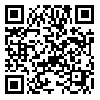Volume 35, Issue 137 (September 2022)
IJN 2022, 35(137): 260-275 |
Back to browse issues page
Download citation:
BibTeX | RIS | EndNote | Medlars | ProCite | Reference Manager | RefWorks
Send citation to:



BibTeX | RIS | EndNote | Medlars | ProCite | Reference Manager | RefWorks
Send citation to:
Najafi Ghezeljeh T, Balouchi M, Haghani S. Attitudes Towards Patient Safety in Pre-Hospital Emergency Medical Staff in Mashhad, Iran. IJN 2022; 35 (137) :260-275
URL: http://ijn.iums.ac.ir/article-1-3090-en.html
URL: http://ijn.iums.ac.ir/article-1-3090-en.html
1- Nursing & Midwifery Research Center, Iran University of Medical Science, Tehran, Iran.
2- Department of Nursing & Midwifery, Iran University of Medical Science, Tehran, Iran. ,majid613691@gmail.com
2- Department of Nursing & Midwifery, Iran University of Medical Science, Tehran, Iran. ,
Abstract: (1887 Views)
Background & Aims: Patient safety is an important component and one of the main elements of quality in health care systems. The patient safety status among the pre-hospital Emergency Medical Staff (EMS) in Iran is unclear and there is almost no information about adverse complications. Assessing the current patient safety culture can be a starting point for improving safety attitudes among health care workers, including pre-hospital EMS who are at the forefront of managing patients in critical conditions. This study aims to survey the attitude towards patient safety among pre-hospital EMS in Mashhad, Iran.
Materials & Methods: This descriptive cross-sectional study was conducted on 438 full-time pre-hospital EMS with at least 6 months of operational work experience in Mashhad city in 2019, who were selected by a census method. The assessment tool was the Emergency Medical Services Safety Attitudes Questionnaire (EMS-SAQ). The collected data were analyzed in SPSS v. 16 using descriptive statistics (frequency, percentage, mean, and standard deviation) and inferential statistics (independent t test, analysis of variance, and Pearson correlation test). The significance level was set at 0.05.
Results: It was reported that 13.75% had a positive attitude towards patient safety. The mean total score of EMS-SAQ was 53.55±10.60. The most positive attitude was related to stress recognition (34.2%) and the lowest positive attitude was related to safety climate and perception of management (5.7%). There was no statistically significant relationship between any demographic characteristics and overall attitude towards patient safety (P>0.05).
Conclusion: The patient safety culture of the pre-hospital EMS in Mashhad is not positive. This requires further research and also taking measures such as holding briefing sessions for managers and staff, increasing the number of staff, setting up an error reporting system, and including topics related to patient safety in the in-service training courses for the staff.
Materials & Methods: This descriptive cross-sectional study was conducted on 438 full-time pre-hospital EMS with at least 6 months of operational work experience in Mashhad city in 2019, who were selected by a census method. The assessment tool was the Emergency Medical Services Safety Attitudes Questionnaire (EMS-SAQ). The collected data were analyzed in SPSS v. 16 using descriptive statistics (frequency, percentage, mean, and standard deviation) and inferential statistics (independent t test, analysis of variance, and Pearson correlation test). The significance level was set at 0.05.
Results: It was reported that 13.75% had a positive attitude towards patient safety. The mean total score of EMS-SAQ was 53.55±10.60. The most positive attitude was related to stress recognition (34.2%) and the lowest positive attitude was related to safety climate and perception of management (5.7%). There was no statistically significant relationship between any demographic characteristics and overall attitude towards patient safety (P>0.05).
Conclusion: The patient safety culture of the pre-hospital EMS in Mashhad is not positive. This requires further research and also taking measures such as holding briefing sessions for managers and staff, increasing the number of staff, setting up an error reporting system, and including topics related to patient safety in the in-service training courses for the staff.
Type of Study: Research |
Subject:
nursing
Received: 2020/05/12 | Accepted: 2022/08/23 | Published: 2022/09/1
Received: 2020/05/12 | Accepted: 2022/08/23 | Published: 2022/09/1
Send email to the article author
| Rights and permissions | |
 |
This work is licensed under a Creative Commons Attribution-NonCommercial 4.0 International License. |







